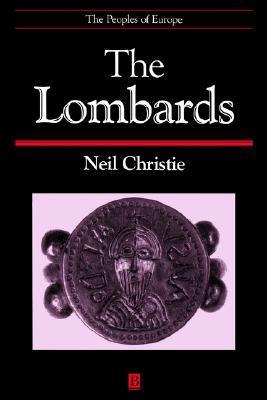The Lombards
 This would be much more appropriately titled The Longobards, but it would unnecessarily further reduce sales on what is already a niche book. Lombardy is a modern region of Italy, and the people living there are Lombards. This is an evolution of the term “Longobard” (long-beard), which was a Germanic tribe that arrived in Italy in the 6th Century. English usually uses Lombard for both, but this is far from the first place I’ve run into Longobard, and I’m quite happy with with Christie’s decision to avoid confusion with more recent people by using Longobard throughout the book (other than the title…) for the medieval kingdom and earlier.
This would be much more appropriately titled The Longobards, but it would unnecessarily further reduce sales on what is already a niche book. Lombardy is a modern region of Italy, and the people living there are Lombards. This is an evolution of the term “Longobard” (long-beard), which was a Germanic tribe that arrived in Italy in the 6th Century. English usually uses Lombard for both, but this is far from the first place I’ve run into Longobard, and I’m quite happy with with Christie’s decision to avoid confusion with more recent people by using Longobard throughout the book (other than the title…) for the medieval kingdom and earlier.
This is the second Peoples of Europe title I’ve gotten that is a current POD copy of a book otherwise out of print. The first one (The Etruscans) had some trouble with the binding giving way for a couple of loose pages; this one has severe binding problems throughout. Any further books I get in the series will need to be electronic, old, used, copies, or try out one of the few books republished by Wiley (with a new cover style) after they bought Blackwell.
Like with most Germanic tribes, their history before entering Roman territory proper is extremely murky. Christie traces what is known/guessed of earlier history in a single chapter before going through what is known of their time in Pannonia. Which isn’t much. Most of the chapter naturally deals with the archaeological record, which is a bit sparse. There’s a lot of work to be done in that area, and the post-Roman period has not been a priority, but that means there’s a lot to be learned about the Longobard presence there.
This leaves the bulk of the book for the Longobard kingdom in Italy. There is a good amount of info here about them. Of course, this is ‘the peoples of Europe’, so I would still like a good history of this period. There’s info here, but its not a main focus compared to talking about settlement patterns and the such. In fact, there’s not as much detailed info there as I’d like, with no diagrams of Longobard-derived place names and the like. In fact, the overall number of illustrations seems low compared to other volumes, which made me think of Osprey books with the profuse number of black-and-white photos. What pictures are here are good, but there’s not quite as many as I’d expect.
Overall, this volume is a bit disappointing compared to the others I’ve read. It’s still a good book, and good reference, but not quite as informative as other books in the line.

Discussion ¬